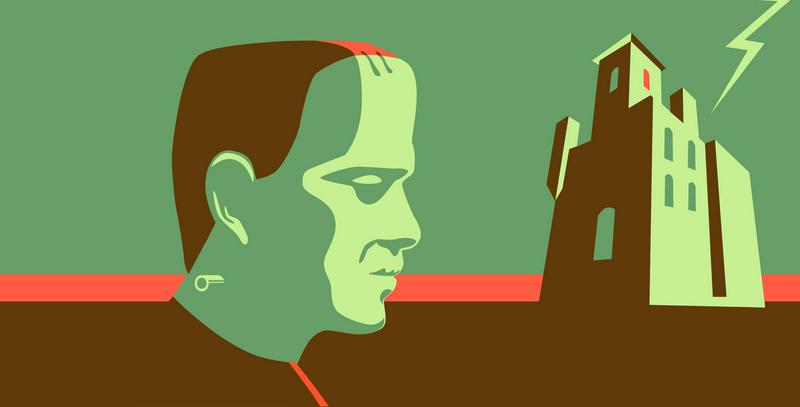Mary Shelley And Frankenstein
By | October 26, 2021

In 1816, the volcano Mount Tambora blew its top, creating what was known throughout the world as the "year without a summer" due to the ash that clouded the atmosphere and caused massive crop failures, fog, and frost across Asia and Europe. This dark and dreary landscape, filled with death and unrest, was the backdrop for many authors who went on to create great works of Gothic horror.
The notable poet Lord Byron invited a number of his young, artistic friends to a country manor in Switzerland but was met with the same miserable weather, so to amuse themselves, they devised a friendly ghost story contest. Initially, the 18-year-old Mary Shelley was nervous and couldn't come up with a story for days, but after a thunderous lightning storm kept her awake, she suddenly "saw the hideous phantasm of a man stretched out and then, on the working of some powerful engine, show signs of life."

Mary Shelley's Frankenstein
Shelley scratched out a short story that, while unpolished, eventually became one of the greatest horror novels of all time. It took over a year for her to turn her story into a full-length novel, and during that time, she was struck with many tragedies, including the suicide of her sister and the deaths of both of her infant children. As a young woman, she had often wished to restore life to the dead, dreaming that her first child, who died after only 11 days, "came to life again; that it had only been cold, and that we rubbed it before the fire, and it lived."
The novel, which she called Frankenstein; Or, The Modern Prometheus, was published anonymously in 1818 by the small publishing house Lackington, Hughes, Harding, Mavor, & Jones. The book was a success, and soon, playwrights began adapting the story and growing its presence in the popular culture of the day. A re-edited version was republished in 1831, this time with Shelley credited, and has consistently sold for the last 200 years.

Modern Frankenstein
Of course, Frankenstein's monster has taken on a life of its own outside the realm of literature, as the classic 1931 film Frankenstein brought us the bolt-necked, black-haired lug of a monster that we all know and love. Due to the nature of panchromatic film used at the time, certain blues and greens would not read correctly and instead show up as a stark white, so makeup artist Jack Pierce painted Frankenstein actor Boris Karloff in a light green that made him appear pale as a corpse on screen. However, promoters of the film simply drew Karloff as they saw him for promotional posters, which is why green skin has become part of the iconic image of the monster. Frankenstein and his monster have since graced the screen in over 50 films and television shows and become a staple Halloween costume available at just about any costume shop in America and beyond.

